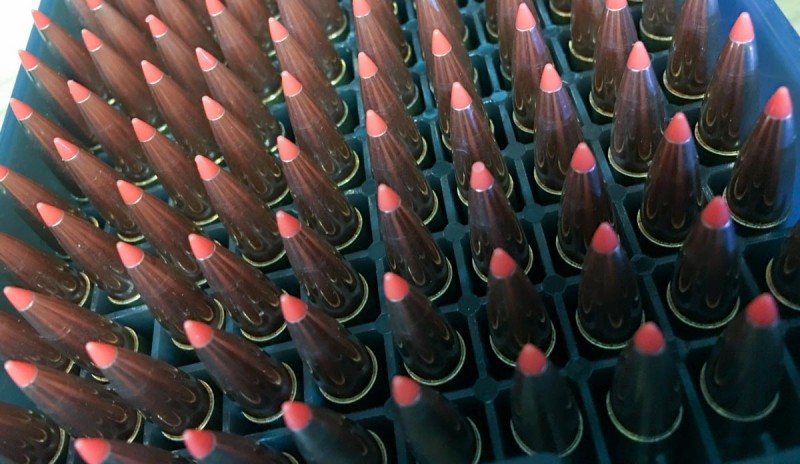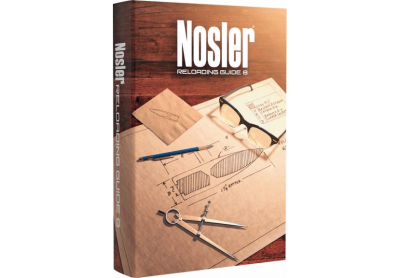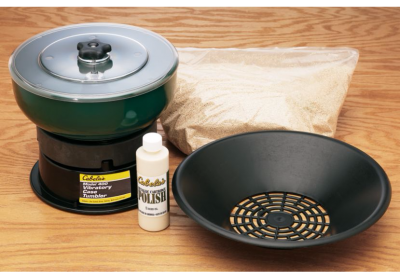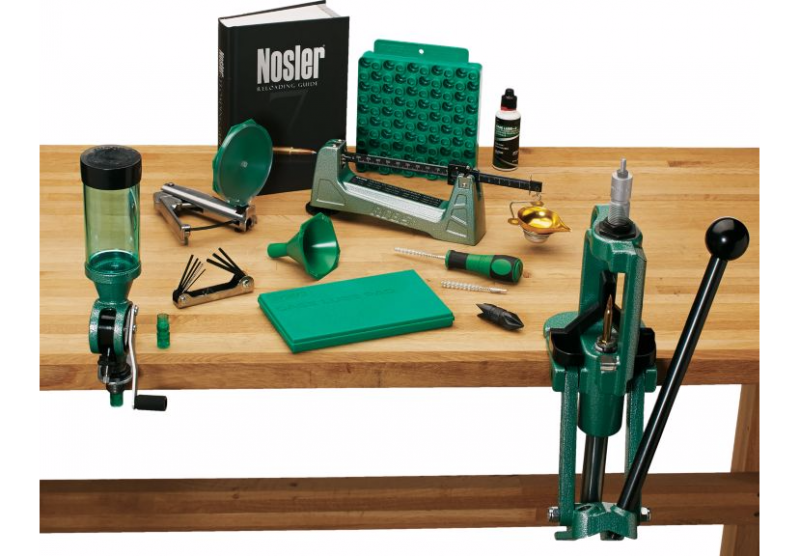This article originally appeared at OutdoorHub.

Reloading rifle cartridges may seem like something that only MENSA Rocket Surgeons and repeat Jeopardy! winners can do, but it’s actually a pretty straightforward process, even if you can’t solve a Rubik’s Cube blindfolded.
The basic idea is to refill the reusable part – the brass case – with more stuff to make it ready to fire again. When you pull apart a rifle cartridge, you’ll find four things, three of which need to be replaced during the reloading process:
The cartridge case. Usually made from brass, this is the component that contains the powder and holds the bullet and primer. It’s the only part that’s reusable. Fortunately, it’s the most expensive piece, so it makes sense to save and reload it.
The primer. What looks to be a small metallic “cap” in the bottom of centerfire rifle cartridges is the primer. It’s filled with a compound that ignites when impacted. The rifle’s firing pin impacts the primer, which conflagrates into the case, thereby igniting the propellant charge.
The propellant. I say “propellant” because it’s not really gunpowder anymore, at least in the true sense of the word. Modern smokeless powder burns incredibly fast, thereby creating a large volume of hot gas that pushes the bullet down the barrel and out the fiery end of your rifle.
The bullet. Last but not least is the bullet itself, also called the projectile. Unless you’re really good at catching these, it’s hard to reuse them.
So simply put, reloading a rifle cartridge requires a series of steps that:
- Clean the brass cartridge case. I keep saying “brass” because those are the only types that are reloadable.
- Reshape and resize the case to its original dimensions. The case expands a bit when fired, so it has to be forced back into shape during this step.
- Trim the case to its proper length.
- Put in a new primer.
- Add new propellant.
- Insert a new bullet.
- Inspect your work to make sure all is hunky dory, and more importantly, safe.

A proper reloading manual is the very first thing you need.
Fortunately, the process is pretty easy provided you take your time, follow instructions carefully and pay attention to detail. Like learning to play the piano, you’ll need two resources to learn how to reload a rifle cartridge. First, you need to learn the process. That part is like taking piano lessons, but much more fun. Second, you need recipes that specify the exact types and amounts of primer, powder, and bullet. In the piano example, that’s like the sheet music.
Many reloading manuals, like the Nosler Reloading Manual, cover both the “how to” and “recipe” topics. This book will cost you less than thirty bucks. In addition to great instructional material, the manual includes thousands of load recipes for hundreds of different calibers and bullet types. Want to know what’s required to reload a .308 cartridge with a 190-grain Nosler Accubond Long Range bullet? No problem, that information will be in the book. If you’re thinking about taking up reloading, buy a reloading manual like this one first to get up to speed and figure out which components you need. Or, if you’re a video learner, check out the Hornady® Reloading and Bullet Accuracy DVD. The professionally produced videos will teach you the ropes of reloading in no time.
Speaking of components, let’s refer back to the series of steps listed above to figure out what you need to reload your own rifle cartridges.
To complete step one, you’ll need a way to clean your brass. The easiest way to get started is with a vibratory tumbler. Dump your dirty brass cartridge cases into the bowl along with granular cleaning media and let the machine run for a couple of hours. Your brass will come out nice and shiny and ready to reload.

Here’s an affordable vibratory brass tumbler from Cabelas.
The next step requires a few different pieces of equipment: a reloading press, a resizing die, and a case trimmer. A resizing die has an interior shaped like the chamber of your gun. The reloading press uses mechanical force to press the brass case into the resizing die and squish it back into the exact original shape. Almost all rifle cartridges will need to be lubricated on the outside of the case so they don’t get stuck in the resizing die. Also during this step, a pin in the center of the resizing die will knock the used primer out of the base of the cartridge case. During the resizing process, most rifle brass tends to stretch just a little bit at the mouth end so the case will be slightly longer than it’s supposed to be. After resizing, you may need to cut those stretched cases back down to size. A case trimmer operates like a small hand-operated or electric lathe, turning the case against a blade to trim it back to the proper length.

You’ll need reloading dies like these RCBS models for each caliber you want to reload.
Now that we’ve prepared the case to proper dimensions, it’s time to insert a new primer. The easiest way to do that is with a hand priming tool. A moderate squeeze with this handy piece of gear and a new primer is pressed into place. With the primer feed tray, you can whip through 100 cases in just a few minutes.
As the hole in the bottom of the case is now plugged with a new primer, the next step is to add the correct propellant charge. Rifle cartridges generate huge pressures when fired, many times well over 50,000 pounds per square inch, so it’s critical to carefully follow the exact propellant types and charge weights specified in the reloading manual. Never, ever exceed published loads and never rely on hearsay information for recipes. Speaking of charge weights, the propellant is measured in grains. Each grain is 1/7,000th of a pound, so you’ll need a reloading scale to measure the correct amount of powder.
The next step in the process is to seat a new bullet into the cartridge. Screw a seating and crimping die into the reloading press, adjust per the instructions and load manual data, and press a new bullet into place. The load recipe will specify an exact overall length for the completed cartridge. This determines exactly how far into the case the new bullet is inserted. Again, it’s critical to follow these measurements exactly. If you push the bullet too far into the case, pressures can increase to dangerous levels since there is less volume inside the case.
The last step is inspection. I like to do this while I’m putting my freshly made cartridges into cases like these MTM Case Guard cartridge boxes. You want to be sure that everything looks right. Make sure a primer is in place and seated flush with the base of the cartridge. Look over the cartridge again to make sure there are no abnormalities like cracks or bulges. Look at the bullet and cartridge case mouth to make sure the bullet is crimped into place cleanly.

A starter kit, like this RCBS Rock Chucker Supreme setup is the way to get going.
We’ve mentioned a few different pieces of gear so far. While you can buy components individually, it makes a lot of sense to invest in a basic reloading kit. That will not only save you some money but get you the things you have to have to get started reloading your own rifle cartridges. The RCBS Rock Chucker Master Supreme Reloading Kit will run you about $300 at Cabelas and has just about everything you need. Included in the kit is a Rock Chucker reloading press, powder scale, hand priming tool, the Nosler Reloading Guide, a tray to hold cartridge cases, a hand tool to chamfer and deburr case mouths after trimming, and pad to lubricate cases for resizing. The only things you’ll need to add for rifle cartridge reloading are a case trimmer, a case tumbler, and a set of calipers to measure overall cartridge case length.
If rifle shooting is your thing, consider reloading your own. Over time, it may save you a few bucks. Better yet, you’ll experience the pride of optimizing custom ammo for your specific rifle.







Two other items one may want to invest in is a Chrograph and maybe QuickLOAD software for reloading, especially if loading Match ammo for precision target shooting.
Although I have found that it really isn’t that accurate on predicting muzzle velocity for a given load, especially rifle loads. Sometimes predicted and actual can vary by up to 200 FPS.
Absolutely, as you move into more intermediate and advanced reloading, a chronograph is a must have, especially if you’re pushing maximum loads per published data.